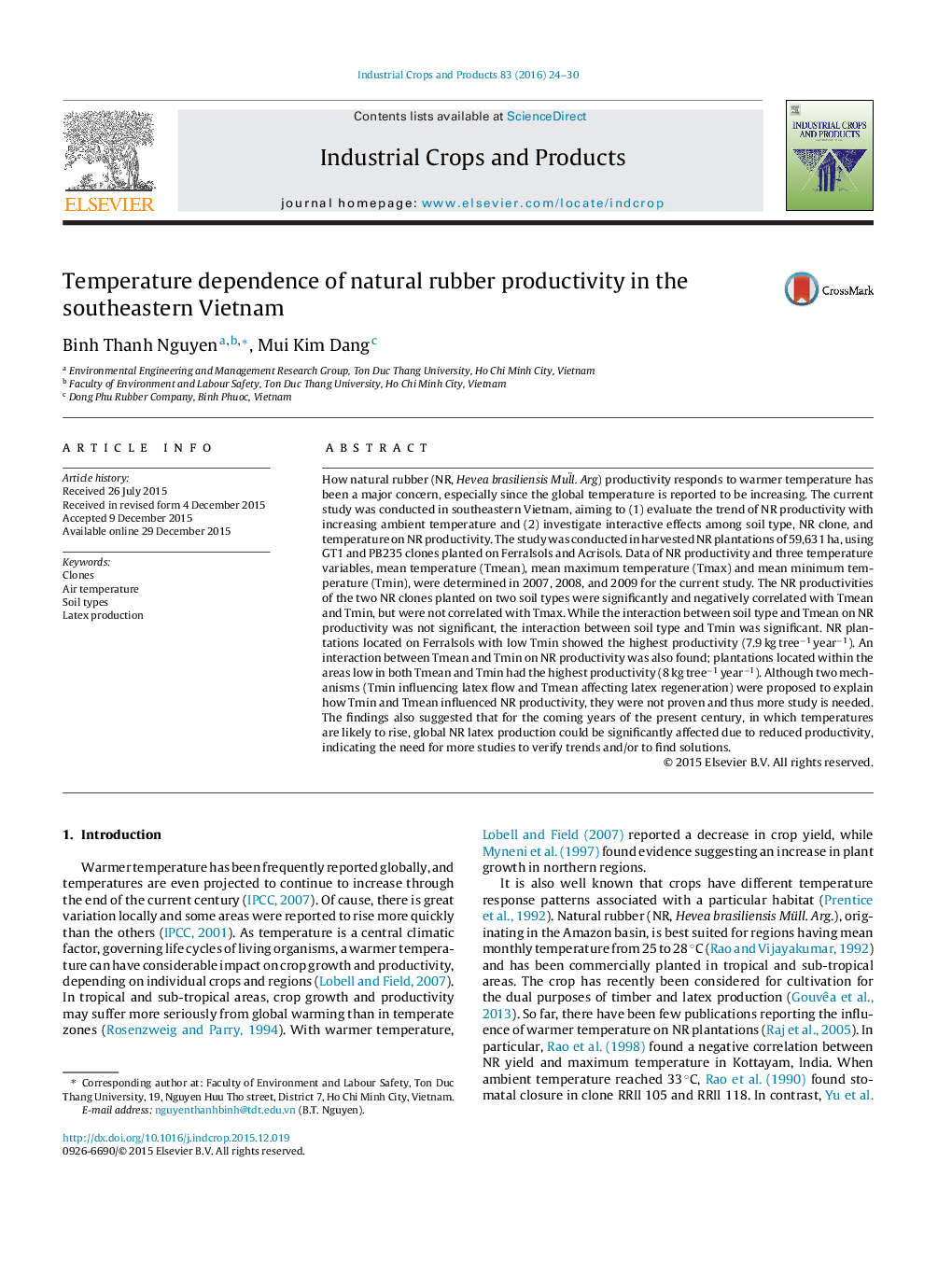| کد مقاله | کد نشریه | سال انتشار | مقاله انگلیسی | نسخه تمام متن |
|---|---|---|---|---|
| 4512326 | 1624827 | 2016 | 7 صفحه PDF | دانلود رایگان |
• Relationship between natural rubber (NR) productivity and mean maximum temperature is not significant.
• NR productivity decreases significantly with a rise of mean temperature (Tmean) and mean minimum temperature (Tmin).
• There are significant interaction effects between soil type and Tmin, and between Tmean and Tmin on NR productivity.
• To have highest productivity, NR plantations should be planted in areas low in both Tmean and Tmin and/or on Ferralsols.
How natural rubber (NR, Hevea brasiliensis Mu¨ll. Arg) productivity responds to warmer temperature has been a major concern, especially since the global temperature is reported to be increasing. The current study was conducted in southeastern Vietnam, aiming to (1) evaluate the trend of NR productivity with increasing ambient temperature and (2) investigate interactive effects among soil type, NR clone, and temperature on NR productivity. The study was conducted in harvested NR plantations of 59,631 ha, using GT1 and PB235 clones planted on Ferralsols and Acrisols. Data of NR productivity and three temperature variables, mean temperature (Tmean), mean maximum temperature (Tmax) and mean minimum temperature (Tmin), were determined in 2007, 2008, and 2009 for the current study. The NR productivities of the two NR clones planted on two soil types were significantly and negatively correlated with Tmean and Tmin, but were not correlated with Tmax. While the interaction between soil type and Tmean on NR productivity was not significant, the interaction between soil type and Tmin was significant. NR plantations located on Ferralsols with low Tmin showed the highest productivity (7.9 kg tree−1 year−1). An interaction between Tmean and Tmin on NR productivity was also found; plantations located within the areas low in both Tmean and Tmin had the highest productivity (8 kg tree−1 year−1). Although two mechanisms (Tmin influencing latex flow and Tmean affecting latex regeneration) were proposed to explain how Tmin and Tmean influenced NR productivity, they were not proven and thus more study is needed. The findings also suggested that for the coming years of the present century, in which temperatures are likely to rise, global NR latex production could be significantly affected due to reduced productivity, indicating the need for more studies to verify trends and/or to find solutions.
Journal: Industrial Crops and Products - Volume 83, May 2016, Pages 24–30
